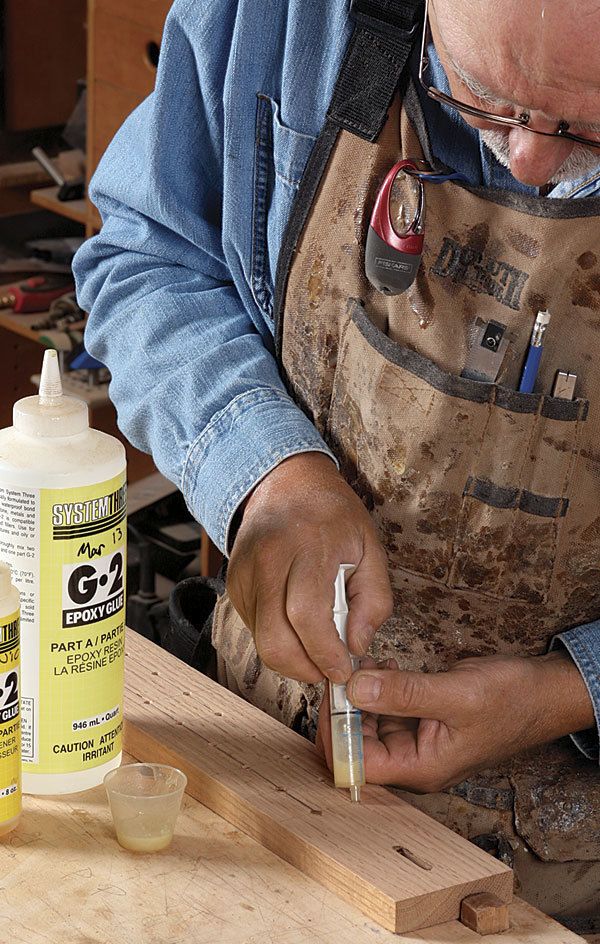How to Toughen Wood with Epoxy
Create durable screw threads and long-lasting jigs
Synopsis: Stripped screw holes and inaccurate, loose shelf-pin jigs will never be a problem again if you start using epoxy to reinforce them as Michael Fortune does. This article shows you his process for reinforcing hinge screw holes before fitting a door, and hardening threaded screw holes for clamps on jigs. The hardened threads are like a steel insert and will never strip. He also uses epoxy to strengthen holes in shopmade drilling guides, such as shelf pin and doweling jigs, ensuring that they never lose their shape.
Any time you repeatedly install and remove a screw in wood or sheet goods like MDF, the threaded hole gets enlarged and you lose holding power.
A perfect example is when you fit a door to an opening. you hang the door on the hinges, check its fit, take the door off, take a few shavings, rehang the door, check the fit again, take the door off again, and so on until all of the gaps are just right. It’s a repetitive task that can strip the screw threads. The same thing happens when you move toggle clamps from one jig to another or to different locations on the same jig.
But stripped threads don’t need to be a problem. For many years, I’ve reinforced the hinge screw holes with epoxy before I begin fitting a door, and used it to harden threaded screw holes for clamps on my jigs. The hardened threads are like a steel insert and will never strip. I’ll show you my process, and how I use epoxy to strengthen holes in shopmade drilling guides, such as shelf pin and doweling jigs. Jigs like these start out accurate but become unreliable because the guide holes get enlarged over time. However, if you saturate the walls of the holes with epoxy, they never lose their shape.
Screw threads that won’t lose their teeth
The secret to strong screw threads is to get them to absorb as much epoxy as possible, so the wood fibers are infused with hardened glue. I’ve found that the best way is to cut the threads with a tap. If you form the threads by driving the screw into a pilot hole, the screw simply pushes the fibers into the shape of the threads. This burnishes the wood, making it less absorbent. If you cut the threads with a tap, more epoxy can soak in.
The prospect of finding a tap to match your wood screws might seem impossible (and probably is). Luckily, you can make it instead, using an extra screw identical to the ones you’ll use. File a groove in the tapered section of the screw to create a cutting edge. Drive it into the pilot hole. The screw now cuts real threads rather than pushing the wood into shape.
After the threads are cut, take another screw—no groove cut into this one—and heat it with a match for about five seconds. Hold the hot screw on the tip of a screw driver and quickly set it on a chunk of paraffin wax. Rotate the screw to melt the wax over the threads and shank, and under the head.
For the full article, download the PDF below:
Fine Woodworking Recommended Products

Estwing Dead-Blow Mallet























Log in or create an account to post a comment.
Sign up Log in